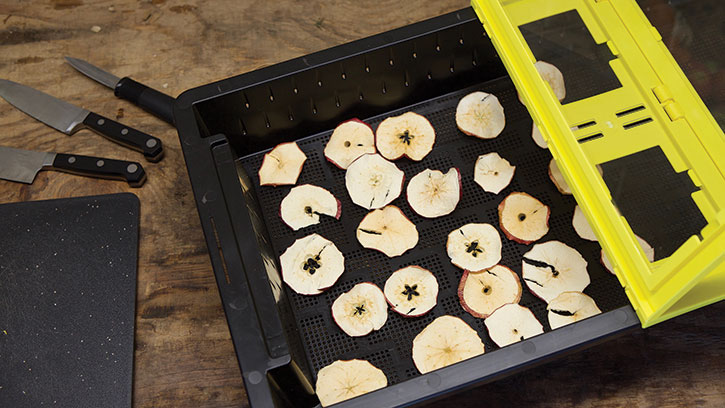Kenyans Use Solar Dryer to Preserve Homegrown Foods
Food Security | INNOVATIONS
An innovative solar dryer is helping Kenyan families preserve their kitchen garden crops for year-round consumption. The Dehytray solar dryer, developed at Purdue University, is part of the Kenyan government’s new “one million kitchen gardens” project, launched in 2020 to help vulnerable families access nutritious foods during disruptions arising from the COVID-19 pandemic.
While well known for its spectacular landscapes and amazing wildlife, Kenya is also a country fraught with hardships, including high rates of poverty and malnutrition. Nearly half (46%) of Kenyans live on less than $1 per day and 36.5% are food insecure (FAO 2022).
The government’s kitchen garden project aims to improve food security for beneficiaries in 21 target counties, providing them with seeds, a shade net, a 50-liter tank, and a solar dryer to increase the shelf life of their harvest (Anyango 2022). The Dehytray solar dryer’s portability, ease of assembly, and low cost make it a good fit for this project.
The Dehytray was the brainchild of Klein Ileleji, a professor of agricultural and biological engineering at the Feed the Future Innovation Lab for Food Processing and Post-Harvest Handling at Purdue University. While working on a solar drying system for maize farmers in Kenya and Senegal, he realized that with some modifications, the drying trays could be used independently as solar dryers.
Ileleji chose a black, food-grade polypropylene copolymer to produce the tray and clear acrylic sheets with slotted vents for the cover. Together, the design and materials allow the Dehytray to act as a mini greenhouse, with temperatures that can reach 55°C–65°C (131°F–149°F), compared with 25.5°C–34.3°C (77.9°F–93.7°F) for open air drying (Mobolaji et al. 2021).
Its compact size also lets users start small and expand drying capacity as needed—an important benefit for smallholder farmers growing their businesses. (For example, about 57 Dehytray units provide the same drying surface capacity [20 m2] as the widely used Innotech Hohenheim solar tunnel dryer.) For cooperatives and other community-based food processing groups, the units can be easily shared among members depending on their needs.
In 2016, Ileleji and his wife, Reiko Habuto Ileleji, cofounded JUA Technologies International (JTI), a Purdue University–affiliated startup, to scale up the technology. (“Jua” is the Swahili word for “sun.”) In 2018, JTI launched the Dehytray. Available online for $139.50 (with a discount if it will be used in a developing country), the Dehytray also comes with a hygrometer that measures water activity to determine when food has been safely dried (JTI 2022).
In Kenya, where more than 9,000 units have been sold, JTI distributes the Dehytray through its subsidiary Dehytech East Africa. The University of Nairobi, Kenya Agricultural and Livestock Research Institute, and the Food and Agriculture Organization of the United Nations have all supported expansion of the Dehytray throughout the country. While leafy greens such as kale, spinach, and collard greens are the top candidates for home drying in Kenya, the Dehytray can also be used for fruits, grains, tubers, fish, meat, and even flowers.
As the Kenyan government grows its kitchen garden project and considers the use of the Dehytray in elementary schools, JTI is busy securing distributors around the globe. With U.S. Department of Agriculture support, small-and mid-sized specialty crop growers are also exploring its potential for use in the United States.


